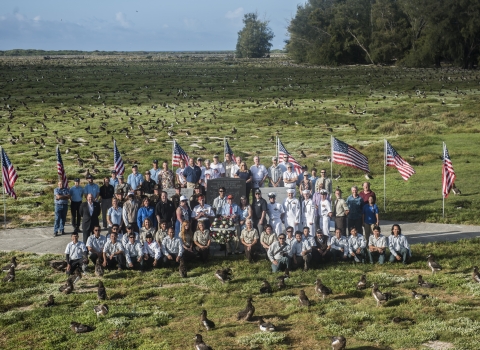“A child’s world is fresh and new and beautiful, full of wonder and excitement. It is our misfortune that for most of us that clear-eyed vision, that true instinct for what is beautiful and awe-inspiring, is dimmed and even lost before we reach adulthood.” -Rachel Carson in "The Sense of Wonder"
“A child’s world is fresh and new and beautiful, full of wonder and excitement. It is our misfortune that for most of us that clear-eyed vision, that true instinct for what is beautiful and awe-inspiring, is dimmed and even lost before we reach adulthood.”
When I read this line from The Sense of Wonder, my mind immediately drifts to the early months of 2019. The summer prior, I had moved from North Carolina to Maine to work for Rachel Carson National Wildlife Refuge, and that winter I endured — very literally — the darkest and coldest time of my life up to that point. As the magic of the holiday season wore off and most of my daylight hours were spent inside trying to stay warm, I felt winter would never end and cursed myself for taking the 45 minutes of extra daylight I’d been getting in North Carolina for granted all those years. I would reminisce about the 75 degree winter days I had enjoyed on the NC coast and tap my heels together three times, hoping I’d end up back there so that I could bask in warm sunlight for a just a few precious minutes. As all stories like this go, the days eventually got longer, the cold became less bone-chilling, and I began my return from hibernation, allowing myself to enjoy the outdoors for longer periods of time by walking on muddy trails or watching the waves on sunny visits to the beach
Since 2015, the staff at Rachel Carson NWR have been collecting data on the life cycles of different species of plants on the refuge, a process known as phenology. Having grown up in North Carolina with short and mild winters, I experienced spring and summer as something you just wake up to one day, returning your one sweatshirt to the closet for the next nine months, never really noticing the subtle responses plants and animals have to the changing seasons. Collecting phenology data during my first year in Maine, I felt like a child watching plants bud and develop leaves, flowers, and fruits for the first time. I’d never experienced such a slow yet noticeable crawl from winter to spring to summer.
Now, every year, when there is still ice on the ground and before the plants start waking up, I look forward to the approach of spring and beginning the data collection for the plants at the Rachel Carson Headquarters. It’s a rewarding and exciting project, waiting for the day the buds finally burst and I can observe the progression of life slowly with the changing daylight hours, as the plants and a southerner from North Carolina slowly wake up and come back to life with a renewed sense of wonder.
Rachel Stearns works at Rachel Carson National Wildlife Refuge as a biological habitat technician and aims to restore salt marsh salt marsh
Salt marshes are found in tidal areas near the coast, where freshwater mixes with saltwater.
Learn more about salt marsh habitats for the wildlife that depend on them and to preserve them for the enjoyment and sense of wonder for future generations. She enjoys kayaking and lounging at the beach in the summer and has embraced the outdoor lifestyle winter in Maine provides by purchasing her own pair of ice skates and crampons for hiking. She hopes to visit each National Park in her lifetime and reports that Acadia National Park in Maine is her favorite so far.






